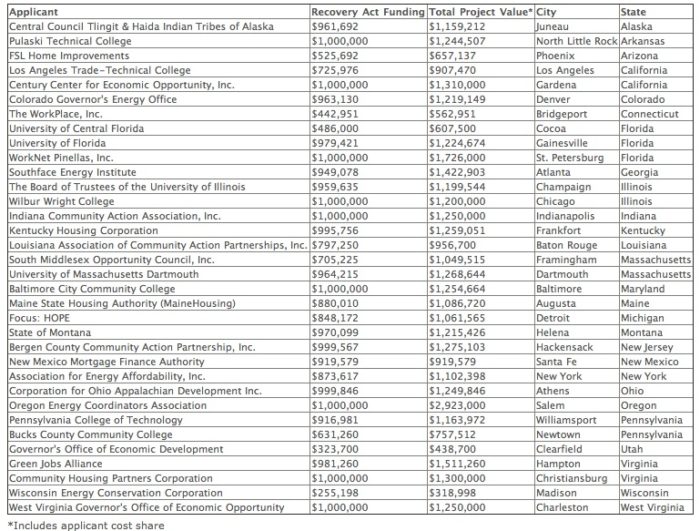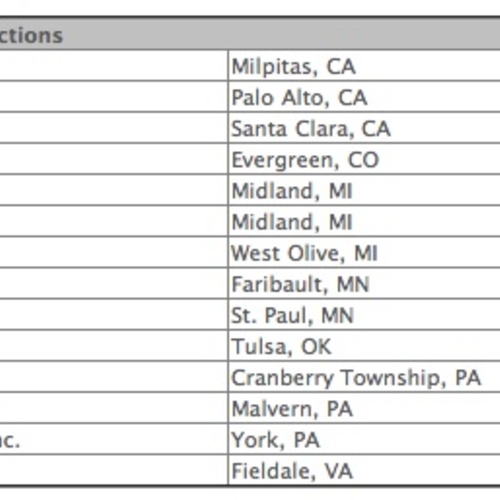
Image Credit: Department of Energy
In at least some states, the slow and bumpy rollout of stimulus-funded weatherization initiatives has at last begun to produce the intended results: enough low-income homes have been weatherized to qualify those states for the second half of their stimulus-fund allotment. As noted in a recent story by Seacoastline.com, 12 states, including New Hampshire, had by the end of May managed to cross the full-funding threshold by satisfactorily weatherizing at least 30% of the homes on their target lists.
New Hampshire had weatherized 985 homes by May 31, and has since been granted the second half of its $23.2 million allotment. The Department of Energy, which runs the Weatherization Assistance Program, cites state records that show 110 people in New Hampshire were added to its weatherization work force in the first three months of the year. The state’s WAP goal is to weatherize just over 2,600 homes using American Recovery and Reinvestment Act funds.
Cold-climate motivation
Other states passing the 30% mark include New Mexico (where 881 homes had been weatherized as of May 31, toward a goal of more than 2,700 on total funding of $26.8 million; 50 workers were hired by weatherization providers during the first three months of the year); Montana (989 homes of more than 2,400 on total funding $26.5 million; 110 new hires); Minnesota (5,268 homes of more than 16,800 on total funding of $131.9 million; 450 new hires); and Utah (1,402 homes of more than 4,400 on total funding of $37.8 million; 80 new hires).
The Seacoastline.com story added that the relatively aggressive approach to weatherization in New Hampshire – as in Maine and Vermont, which have also passed the 30% threshold – reflects residents’ normal response to long, cold winters. But the only sun-drenched qualifier on that list, New Mexico, isn’t the only warm-weather state to advance to full funding.
An unlikely weatherization leader
One of the nation’s most rapid WAP deployments under expanded funding through the ARRA has been in Mississippi, where 2,584 homes, out of a 5,400-home target, had been weatherized as of April 30. About 150 people were added to the state’s weatherization-provider payrolls during the first three months of the year.
A study by Oak Ridge National Laboratory shows that low-income homes that have been weatherized in Mississippi will save an average of $437 annually on their energy bills, the DOE says. The state was allocated a total of $49.5 million in stimulus funds for WAP work.
A boost to training
There are, of course, other initiatives that will play roles in making reliable weatherization services available to more households. The DOE’s $450 million Retrofit Ramp-Up program – designed to provide whole-neighborhood energy efficiency retrofits to residential, commercial, and public buildings – has been in development since the agency issued a Request for Information back in September. And on June 4, the agency announced a commitment of $29 million in stimulus funds to expand 8 existing weatherization training centers and establish 26 new ones, which would more than triple the number of DOE-funded weatherization training centers nationally.
The overall objective, the DOE says, is to offer standardized training curricula to prospective weatherization workers, supervisors, and inspectors “to maintain a high degree of quality in weatherization projects and to work in the growing field of energy efficiency retrofits. The centers and programs will offer training using a combination of classroom, online, and hands-on learning tools.”
Weekly Newsletter
Get building science and energy efficiency advice, plus special offers, in your inbox.














One Comment
Only 10%?
Only 10% of states have reached their full allotments? I thought there were more at this point. Even though not all the states have reached that point, the ones that have have certainly made a difference. Once the Home Star legislation gets passed, it will provide more incentive and be much easier to pursue weatherization projects.
Log in or create an account to post a comment.
Sign up Log in